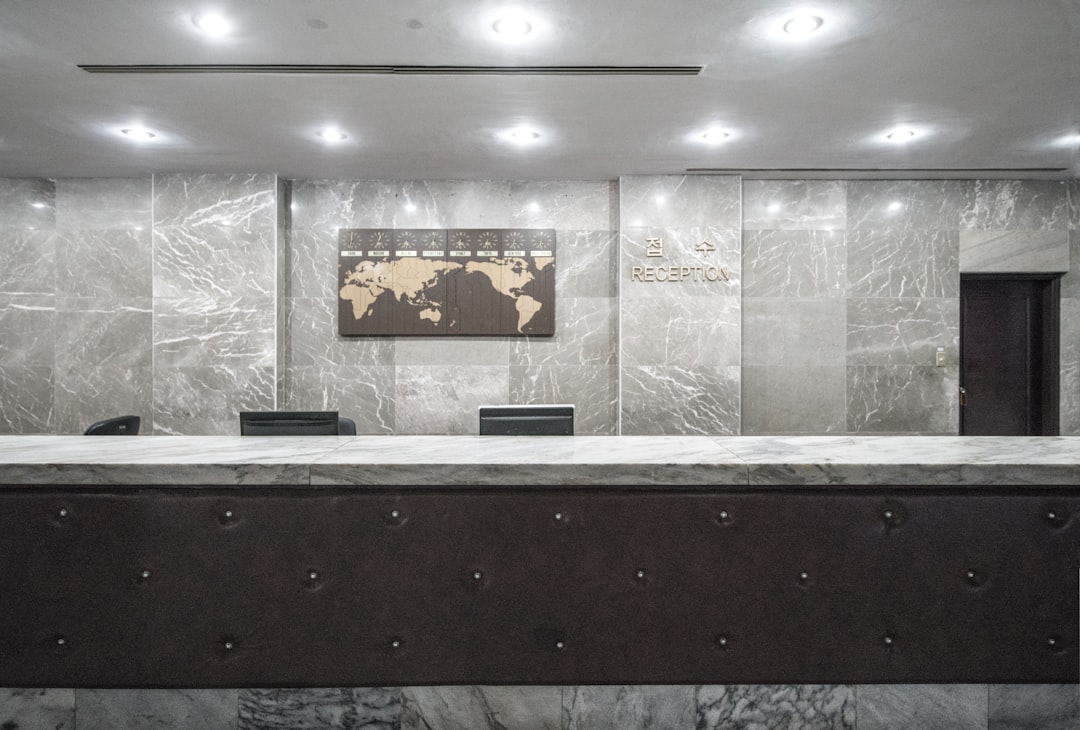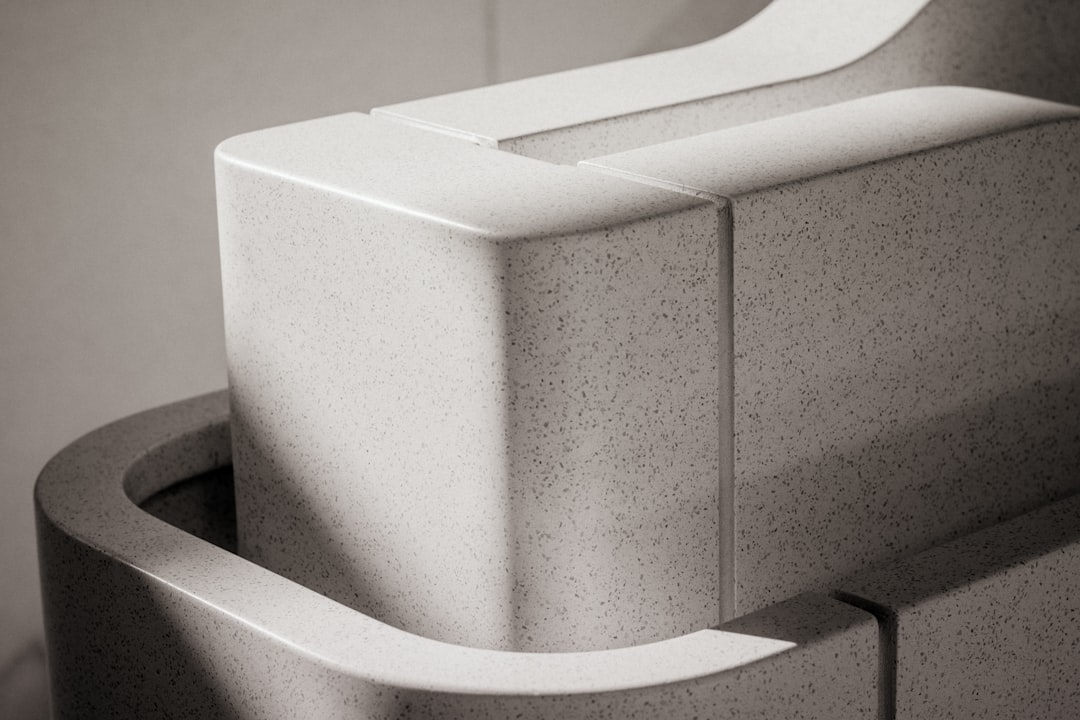

Engage prospects with a scan and streamline customer engagement with FREE QR code marketing tools by Sona – no strings attached!
Create a Free QR CodeFree consultation

No commitment

Engage prospects with a scan and streamline customer engagement with FREE QR code marketing tools by Sona – no strings attached!
Create a Free QR CodeFree consultation

No commitment
Today’s competitive landscape means homeowners and commercial property managers expect seamless access to kitchen and bath renovation options. Concrete countertop installation services are under increasing pressure to keep pace with digital-savvy clients who want everything from design inspiration to cost estimates and scheduling, without the friction of traditional processes. Many providers still depend on analog approaches like printed brochures, repeated site visits, and manual quoting, which results in missed opportunities, slower cycle times, and prospects lost to faster competitors.
Missing out on high-value prospects is a real challenge, especially when those who express early interest remain anonymous, untracked, and unengaged. A walk-in who picks up a brochure, a neighbor who notices a job site sign, or a facilities manager who flips through a mailed catalog can be genuinely interested, yet leave no digital footprint. Without visibility into who is engaging with offline materials or visiting the showroom, service providers often do not know which buyers are considering their products until it is too late for timely outreach.
QR codes offer concrete countertop installation services a practical, modern way to connect interested buyers with digital resources, including interactive design galleries, cost calculators, and appointment scheduling tools. These codes reduce friction, improve measurement of conversion points, and accelerate the buying cycle with a simple scan. QR technology surfaces valuable engagement signals so every interaction, online or off, can be converted into an actionable lead that moves through a measurable, efficient funnel.

Too often, prospects with genuine interest in concrete countertop design walk away untracked, never entering the CRM or pipeline. Relying solely on paper forms or repeated follow-up calls introduces delays and allows competitors to engage first. QR codes bridge offline touchpoints and online engagement, enabling you to capture, qualify, and respond to leads in real time while reducing manual processes that frequently result in missed opportunities. A scan can instantly open a booking form, calculator, inspiration gallery, or chat, turning passive browsing into an immediate next step. See practical tactics in QR codes in marketing.
Design your QR program as an integrated system rather than a set of loose codes. Assign each code a clear purpose, destination, and measurement plan; then connect scan activity to automated workflows. This approach upgrades past analog processes: printed brochures become dynamic galleries with saved favorites; job site signs become geo-targeted lead capture points; trade show handouts become instant consultation bookings tied to staff follow-up. Platforms like Sona QR product overview make it simple to generate dynamic codes, centralize tracking, and sync scan activity with your CRM so your team can act on the warmest signals first.
Modern QR platforms support code creation, journey tagging, and automated enrichment of CRM records, helping you move from manual to data-enabled engagement with minimal friction. They also allow you to update destinations without reprinting materials, which is critical when designs change, promotions rotate, or seasonal demand spikes.

Concrete countertop installers know that prospects often research without reaching out directly, browsing displays at expos, handling distributor samples, or reading mailers, yet leaving no digital footprint for the sales team. The challenge is twofold: limited visibility into this anonymous traffic and the risk that promising leads never make it into nurturing campaigns or follow-up queues. QR codes break this cycle by making every flyer, sign, sample, and spec sheet interactive and measurable, as seen in Quikrete QR codes.
QR codes matter because they create immediate pathways to action. A homeowner ready to compare finishes can scan a code on a sample board and save preferred textures. A facilities manager can scan a code on a brochure to request a site visit window that fits building access requirements. A designer flipping through a lookbook can scan to download CAD details or request a wholesaler price list. Each of these moments converts curiosity into structured data and next steps.
For concrete countertop installation services, QR-enabled touchpoints transform every interaction into a potential data point. The result is higher conversion rates, faster response times, and improved marketing efficiency. Instead of guessing which print campaigns work, you can attribute performance, refine messaging, and scale investments that close more projects.

Missed or unqualified leads often stem from disconnected processes, for example paper sign-up sheets that get lost, sample boards that do not connect to follow-up, or understaffed showrooms that cannot capture interest during peak hours. Modern QR code formats help you close these gaps by matching the right destination to the right moment.
With dynamic QR codes, you can update destinations, add UTM parameters, and track performance without replacing physical assets. For evergreen resources like maintenance instructions, static codes are sufficient and cost-effective. For campaigns, promotions, and rotating content, dynamic codes deliver far more flexibility and insight.

Many promising leads are lost simply because marketing assets are not equipped to convert passive interest into actionable data. If visitors engage with your showroom, mailers, or job site yet never scan a code or leave a trace, opportunities vanish. Identify high-impact placements where a scan is natural and useful, then design a clear call to action.
Start with the materials and environments you already use. Showrooms, distributor locations, and trade shows draw concentrated attention from buyers and influencers. Job sites and vehicles reach neighborhood homeowners at the perfect moment of inspiration. Post-install materials engage happy customers when referrals are most likely. Each of these contexts can support a well-placed QR activation that turns interest into a recorded signal.
Careful QR code placement ensures each touchpoint becomes a source of actionable insight, not just static promotion. Pair the placement with a compelling CTA and a destination that respects the user’s context: inspiration for early-stage moments, quoting for mid-funnel, and care resources for post-install relationships.

Mapping a handful of targeted QR use cases to your buyer journey produces outsized returns. Start with the interactions that already happen frequently and add a scan that removes friction or provides richer information.
You can expand these into specialty workflows. For commercial projects, link to ADA compliance information, thickness specifications, and submittal packages. For design partners, offer a QR path to request samples, download CAD blocks, or book a lunch-and-learn. Each audience can receive a tailored destination that supports their role in the decision.
Each QR code scan is a signal that carries context: who scanned, where, when, and why. By deploying multiple QR codes across touchpoints, you can segment your audience automatically and use that data to fuel precise retargeting and follow-up. This transforms a flat mailing list into dynamic, intent-rich audiences that convert faster. For a tactical framework, see Sona’s playbook on intent-driven retargeting.
Start by matching codes to journey stages. Awareness codes on neighborhood signs and mailers identify early interest. Consideration codes on sample walls and spec sheets capture preferences and project details. Conversion codes on pricing sheets and limited-time offers accelerate bookings. Post-install codes on care guides and referral cards nurture loyalty and repeat business. The more specific the code’s purpose, the more specific your follow-up can be.
For this industry, audience distinctions often include homeowners vs. designers, retail customers vs. commercial property managers, and new prospects vs. post-install customers. Segmenting along these lines allows you to deliver specific value: finish selection guides to homeowners, CAD details to designers, and maintenance plans to commercial managers.
A key frustration for many services is wasted ad spend and muddled customer journeys caused by a lack of integration across channels. QR codes act as the connective tissue, creating a consistent handoff from physical to digital and a data layer that clarifies what drives results. When every physical asset points to a coordinated set of destinations, you reduce friction and create measurable pathways that scale.
Think of QR codes as trackable links for the physical world. They allow you to test creative variations in print, prove ROI on event sponsorships, and connect foot traffic to online bookings. The payoff is twofold: less friction for buyers who want immediate answers and better visibility for marketers who need to know which investments generate pipeline.
Centralized QR data offers a unified view of how and where prospects engage. With a platform like Sona QR, you can generate, manage, and monitor codes in one place; then sync performance data with your CRM and ad tools. This integration turns offline efforts into components of a cohesive digital strategy that prioritizes speed, relevance, and measurable outcomes.
A well-run QR campaign begins with clear goals and a realistic plan for creative, placement, and measurement. The goal is not to place codes everywhere; the goal is to place the right code in the right place with the right call to action. Treat each code as a micro-campaign with an intended outcome and a method to capture and act on the signal.
Use the checklist below to launch and iterate. For most installers, a phased rollout works best: start with one or two high-impact placements like showroom displays and job site signs; then expand to direct mail, events, and post-install kits as you learn what works. Sona QR can support each step with dynamic code management, journey tagging, and CRM sync at sqr.me.
For many concrete countertop installation services, a persistent problem lies in incomplete visibility from initial interest to final sale. Without unified tracking, it is nearly impossible to know which marketing touchpoints generate real pipeline or revenue, which leads to inconsistent messaging and suboptimal budget allocation. Modern platforms solve this by connecting the scan to downstream behaviors and surfacing insights your team can act on.
Tracking should capture more than a tally of scans. The right setup records context, attributes actions, and ties engagement to contacts in your CRM. With dynamic QR codes, UTM parameters, and integrations, you can see which direct mail route, job site sign, or booth banner drove a consult request. You can enrich contact records with the design set viewed, the finish selected, and the time between scan and booking. This level of detail informs who is ready for a proposal versus who needs more education.
If you use Sona QR and Sona.com, you can extend these capabilities. Sona is an AI-powered marketing platform that turns first-party data into revenue through automated attribution, data activation, and workflow orchestration. Sona QR tracks scans by time, device, location, and campaign source. Sona.com helps connect anonymous scans to known buyers through identity resolution and multi-touch attribution; then unifies offline scans with website visits, ad clicks, email engagement, and CRM activity. For methodology, read Sona’s blog on offline attribution. The result is transparent progression from first touch to purchase readiness and clearer attribution to pipeline and revenue.
As a baseline, establish benchmarks for scan-to-lead rate, lead-to-appointment rate, and appointment-to-install conversion. Monitor median time from scan to first response and from first response to scheduled visit. These metrics guide your SLA design and highlight where automation or staff training will produce immediate gains.
Scaling QR impact requires a blend of creative deployment, operational discipline, and smart automation. Focus on turning every scan into either a captured lead or a stronger relationship signal. Then route that signal into the right next step without delay.
Start with a few best practices that consistently improve outcomes in this vertical. Align each tip to a common physical medium in your mix and assign owners for ongoing optimization.
Two creative deployment ideas tailored to installers:
You can generate and track your first QR codes for free with Sona QR. Start creating QR codes for free, create dynamic codes for your top use cases, and connect them to your CRM in minutes so every scan triggers a smart next step.
In the race to meet rising client expectations for quick and convenient service, adopting QR code technology can be a game changer for concrete countertop installation services. By weaving QR codes into every stage of the client journey, from initial interest and design exploration to quoting, installation, and ongoing care, providers can capture even those leads who never fill out a form or make a call. This approach closes gaps that once led to missed opportunities, while empowering teams to deliver relevant messaging and outreach based on real engagement signals.
By embedding QR codes throughout your marketing and operational workflows, you can finally surface and pursue high-value prospects who once slipped through the cracks. The result is a scalable, measurable, and customer-centric approach to lead capture and nurture that shortens sales cycles and improves close rates. As the industry evolves, those who turn every physical touchpoint into a data-driven engagement channel will be best positioned for sustainable growth and repeat business.
QR codes are more than a shortcut. They are a strategy. They deliver instant engagement across printed materials and signage, a connected experience that moves people from awareness to conversion, and actionable data that turns each scan into a clear signal for growth. With Sona QR, you have everything you need to capture demand at the source, connect scans to revenue, and build a performance marketing engine that thrives across both the physical and digital sides of your business. For broader measurement strategy, see Sona’s blog on revenue attribution.
QR codes have transformed the concrete countertop installation services industry from traditional, manual processes into dynamic, measurable growth opportunities. Whether it’s streamlining customer acquisition, enhancing client experiences with instant access to project portfolios, or providing real-time updates on installation progress, QR codes turn every interaction into a powerful engagement tool. Imagine clients scanning a code to instantly view detailed material specs or maintenance tips, boosting trust and satisfaction.
With Sona QR, you can create dynamic, trackable QR codes in seconds, update campaigns without reprinting, and connect every scan directly to your business outcomes. This means no missed leads, instant feedback, and the ability to optimize your marketing efforts based on real data. Start for free with Sona QR today and transform every scan into a valuable connection, a qualified lead, or a loyal customer.
Choose a service that uses modern digital tools like QR codes for seamless design inspiration, cost estimates, scheduling, and real-time lead capture to ensure timely and personalized customer engagement.
The article does not specify the average cost of installing a concrete countertop.
Concrete countertops offer customizable design options with various finishes and styles, durable surfaces, and the ability to showcase unique textures and colors.
The article does not provide information on the installation timeline for concrete countertops.
Concrete countertops come in a range of styles and finishes that can be browsed through digital design galleries accessible via QR codes, allowing shoppers to filter by color, finish, edge profile, and maintenance level.
QR codes connect offline touchpoints to digital resources, enabling instant lead capture, interactive design browsing, cost calculations, appointment scheduling, and better tracking of customer engagement.
Useful QR code formats include web links to design galleries, forms for instant data capture, vCards for contact sharing, pre-composed SMS or email messages for quick inquiries, and videos demonstrating product features.
Place QR codes on sample displays, demo kitchens, direct mail brochures, trade show materials, job site signs, product packaging, and care kits to naturally capture buyer interest and convert passive browsing into leads.
QR codes provide granular analytics by recording scan context, linking engagement to CRM records, tracking downstream actions like bookings and installations, and enabling ROI calculation per marketing asset.
Assign unique QR codes to each campaign or asset, add UTM parameters for accurate attribution, automate immediate follow-up after scans, educate staff and customers on scanning benefits, and test and optimize campaigns regularly.
Use Sona QR's trackable codes to improve customer acquisition and engagement today.
Create Your FREE Trackable QR Code in SecondsJoin results-focused teams combining Sona Platform automation with advanced Google Ads strategies to scale lead generation

Connect your existing CRM

Free Account Enrichment

No setup fees
No commitment required

Free consultation

Get a custom Google Ads roadmap for your business






Launch campaigns that generate qualified leads in 30 days or less.
